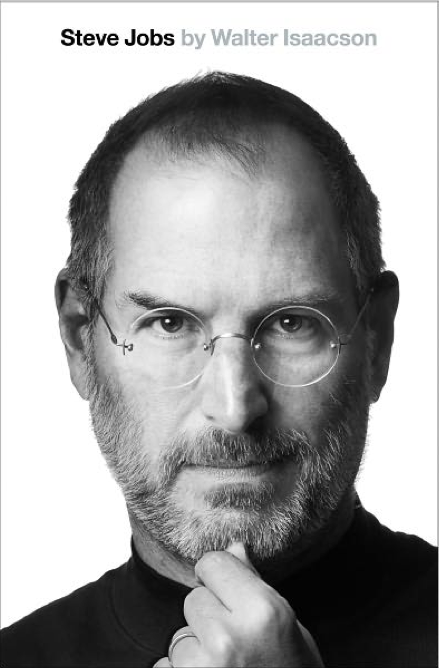Imaginea de mai sus o vom regasi pe coperta cartii intitulate Steve Jobs: A biography, carte care va fi prima biografie autorizata a CEO-ul Apple, Steve Jobs. Walter Isaacson este autorul biografiei iar aceasta se bazeaza pe peste 40 de interviuri cu Steve Jobs plus multe altele facute cu prietenii si familia sa. Cartea costa 20$, va avea 448 de pagini si va fi lansata in luna noiembrie a acestui an, cu aproape jumatate de an mai devreme fata de data initiala care anunta o lansare in luna martie a anului 2012.
Partea interesanta a acestei biografii sta in faptul ca Steve Jobs a vorbit despre viata sa insa aparent nu a controlat in vreun fel procesul de creatie. De-a lungul vremii au aparut mai multe “biografii” ale lui Steve Jobs scrise fie de fosti membri ai conducerii companiei fie de alti autori care nu au reusit sa ii ia un interviu omului aflat acum la conducerea companiei Apple. Lansarea cartii Steve Jobs: A biography va avea loc pe 21 noiembrie in SUA iar in Romania probabil va ajunge cateva saptamani mai tarziu.
Based on more than forty interviews with Jobs conducted over two years as well as interviews with more than a hundred family members, friends, adversaries, competitors, and colleagues this book chronicles the rollercoaster life and searingly intense personality of a creative entrepreneur whose passion for perfection and ferocious drive revolutionized six industries: personal computers, animated movies, music, phones, tablet computing, and digital publishing.
It is also a book about innovation. At a time when America is seeking ways to sustain its innovative edge, and when societies around the world are trying to build digital-age economies, Jobs stands as the ultimate icon of inventiveness and applied imagination. He knew that the best way to create value in the 21st century was to connect creativity with technology, so he built a company where leaps of the imagination were combined with remarkable feats of engineering.
Although Jobs cooperated with this book, he asked for no control over what was written nor even the right to read it before it was published. He put nothing off limits and instead encouraged the people he knew to speak honestly even foes, former girlfriends, and colleagues he had once fired or infuriated. “I’ve done a lot of things I’m not proud of, such as getting my girlfriend pregnant when I was 23 and the way I handled that,” he said. “But I don’t have any skeletons in my closet that can’t be allowed out.”
Jobs speaks candidly, sometimes brutally so, about the people he worked with and competed against. Likewise, his friends, foes, and colleagues provide an unvarnished view of the passions, perfectionism, obsessions, artistry, devilry, and compulsion for control that shaped his approach to business and the innovative products that resulted.
He was not a model boss or human being, tidily packaged for emulation. Driven by demons, he could drive those around him to fury and despair. But his personality and products were interrelated, just as Apple’s hardware and software tended to be, as if part of an integrated system. His tale is thus both instructive and cautionary, filled with lessons about innovation, character, leadership, and values.






















